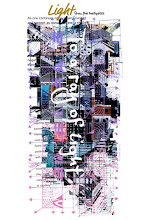With the proliferation of the internet and smartphones, people have easy access to various information. For example, consumers can easily obtain price comparisons for products and make judgments about their value by utilizing video-sharing sites, social networking services (SNS), blogs, and other platforms, rather than relying solely on one-sided corporate information.
The knowledge obtained by consumers through online information is utilized on smartphones and computers. Smartphones now come equipped with features such as music, videos, photos, games, internet browsing, maps, location services, weather forecasts, and address books, among others, while simultaneously becoming more multifunctional and compact. Advancements in projection technology are also underway, exploring the possibility of projecting 3D images into empty space. As spatial projection technology evolves, it will become possible to project 2D and 3D images in the air rather than on the phone screen. This will lead to further miniaturization of the devices, allowing only the images to appear suspended in space.
In conjunction with the advancement of projection technology, compression techniques are being developed to maintain high-quality images while reducing their size. These techniques find application in smartphones, the internet, and other areas.
As various technologies converge, portable devices are becoming multifunctional to the point where their physical form becomes less visible. Combined with image compression technology, the ability to project images into space is progressing, moving towards the magical ability to display them anywhere.
By combining various cutting-edge technologies, it becomes evident that scientific advancements are moving towards a singular direction. It is already possible to connect the human brain to a computer, allowing people to control robotic arms through their thoughts alone, or conversely, enabling computers to send commands to the brain. This involves reading the electrical signals emitted by the human brain. Motor commands from the brain are transmitted through the spinal cord, nerves throughout the body, and ultimately reach the muscles, enabling movement. By reading these command signals and connecting them to a robotic arm, it becomes possible to control its movement. Moreover, individuals who have lost their vision can wear glasses with built-in video cameras that convert the images captured by the glasses into electrical signals, allowing the brain to perceive them as visual information.






0 コメント